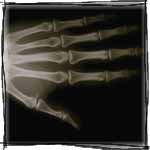Repetitive work at your desk can be tough on your wrists and hands. In this two-part feature, we look at what CTS is and how it can be treated.
Part II
Ng Min Li
Physiotherapist
What Carpal Tunnel Syndrome means
Carpal tunnel syndrome (CTS) is a common problem that affects the hand and wrist. This syndrome is one of a group of disorders known by several terms: repetitive stress injury (RSI), cumulative trauma disorder (CTD), overuse injury or repetitive motion disorder. All of these problems are generally associated with repetitive and forceful use of the hands that damage the muscles and bones of the upper limb.
Are you at risk?
At high risk are those whose work combine force and repetition of the same motion in the fingers and hands for long periods.
Such workers include those in the assembly line and packaging industries, dentists and dental technicians who use their hands and wrists repetitively, and workers using vibrating tools such as jackhammers and saws.
Despite much publicity about CTS in typists, the risk of typists developing CTS is much lower than those in occupations involving heavy labour. The force of the movement may, however, be a factor for CTS in typists. One study noted that typists with CTS struck the keyboard with greater force than those without the disorder.
In Singapore, repetitive strain disorders of the upper limb (which CTS belongs to) is notifiable under the Factories Act and compensable under the Workmen's Compensation Act.
The anatomy of CTS
CTS is a condition that results when too much pressure is placed on the median nerve as it runs into the hand through a passageway called the carpal tunnel.

The carpal tunnel is a passageway in the wrist which is made up of small wrist bones on the bottom and both sides, and the transverse carpal ligament on the top. It is through this tunnel that the median nerve and nine flexor tendons pass through. The median nerve travels up the hand, and it is responsible for feeling in the thumb, index, middle and ring fingers. It also controls the muscles at the base of the thumb (thenar muscles).
The flexor tendons bend (flex) the fingers and are covered by a lining called tenosynovium. The tenosynovium is very slippery and allows the tendons to glide against each other as the fingers flex. Anything that causes irritation or inflammation of the tendons can result in swelling and thickening of the tenosynovium, which, in turn, results in increased pressure in the carpal tunnel.
The increased pressure in the carpal tunnel squeezes the median nerve against the transverse carpal ligament. Eventually, the pressure reaches a point when the median nerve ceases to function normally, resulting in pain, numbness and weakness.
Signs that you may have CTS
One of the first symptoms of CTS may be numbness and tingling of the thumb and fingers (except the little finger). There is also pain in the wrist and hand, and the pain may radiate up the arm to the shoulder.
Symptoms may occur not only when the hand is being used but also when it is at rest. Pain can occur at night after going to bed. If the condition is allowed to progress, wasting and weakening of the thenar muscles can occur, resulting in difficulties with pinching and grasping.
What tests you may need to take
Several tests can be done to confirm the diagnosis.
- The Tinel's Sign: This is done by tapping on the median nerve - a tingling sensation in one or more fingers indicates damage to the median nerve.
- Another test (Phalen's test) involves bending the wrist for one minute - a test is considered positive when a tingling sensation develops in less than 60 seconds.
- A more sensitive test involves inflating a modified blood pressure cuff to put pressure on the carpal tunnel and reproduce these symptoms.
Nerve conduction studies of the median nerve can also be done and would be expected to show delay in the transmission of nerve impulses across the wrist.
What treatments are available for CTS patients? Find out in the second part of this feature tomorrow.
References:
- Feuerstein M, Burrell LM, Miller VI, Lincoln A, Huang GD, Berger R (1999): "Clinical management of carpal tunnel syndrome: a 12-year review of outcomes." Am J Ind Med 35(3):232-45
- Rozmaryn LM, Dovelle S, Rothman ER, Gorman K, Olvey KM, Bartko JJ (1998): "Nerve and tendon gliding exercises and the conservative management of carpal tunnel syndrome." Journal of Hand Therapy 11(3): 171-9.
- Slater RR (1999): "Carpal tunnel syndrome: current concepts." Journal of Southern Orthopaedic Association 8(3)
- Canadian Centre for Occupational Health & Safety Website, www.ccohc.ca